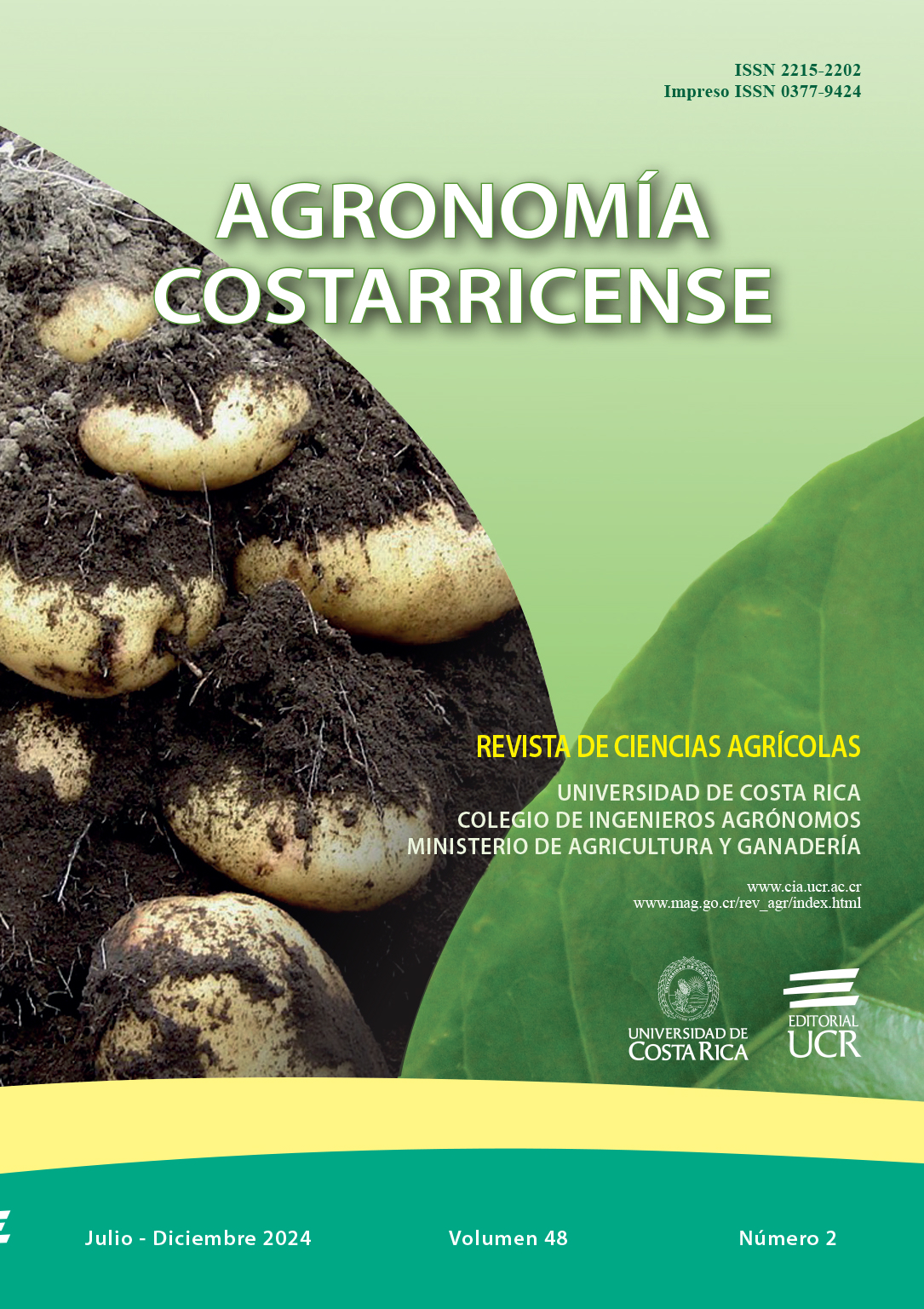Abstract
Introduction. Potato crop represents a fundamental activity within the Costa Rican economy. Since 2015, the Elbe-UCR variety has been available in the potato agrifood chain, being considered as promising due to its high tolerance to pathogens, insect pests, and drought conditions, as well as its high yields (greater than 40 t ha-1). Despite this, there are no studies about growth and nutrient accumulation that would allow a better fertilization planning for this potato variety, aiming to attain sustainable production. Objective. To develop and validate nutrient accumulation curves for the Elbe-UCR potato variety, cultivated in the Northern Zone of Cartago. Materials and methods. Biomass samples were collected every 15 days after planting (dap), which were separated into aboveground biomass, tuber, and root, to determine their fresh and dry mass, as well as their nutrient concentration. Results and discussion. The Elbe-UCR variety accumulated an average dry matter value of 12016 kg ha-1 at 135 dap, of which 70% corresponded to the tuber biomass. For a yield of 40 t ha-1, this variety accumulated a total of 195, 20, 312, 54, 16, and 20 kg ha-1 of N ,P, K, Ca ,Mg, and S, respectively. It also accumulated a total of 336, 123, 6250, 337, y 213 g ha-1 of Fe, Cu, Zn, Mn, and B, respectively. Conclusion. The Elbe-UCR variety showed a great capacity for Ca and K accumulation and does not require the high levels of N regularly applied by producers in Costa Rica. The results obtained in this study are considered fundamental for the management of fertilization and the development of commercial formulations for this variety, aiming for a more sustainable production.

This work is licensed under a Creative Commons Attribution-NonCommercial-NoDerivatives 4.0 International License.
Copyright (c) 2024 Agronomía Costarricense

